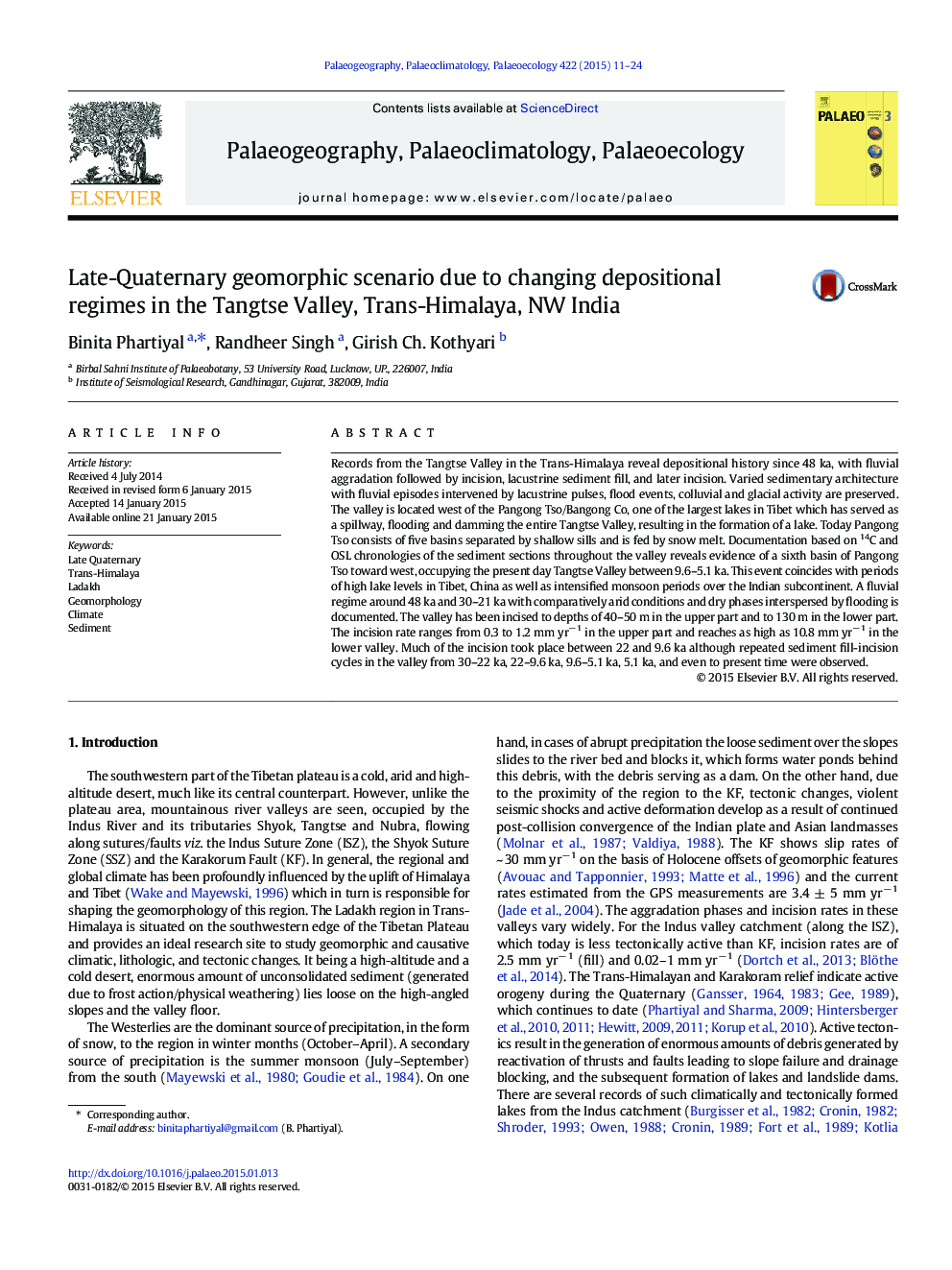| کد مقاله | کد نشریه | سال انتشار | مقاله انگلیسی | نسخه تمام متن |
|---|---|---|---|---|
| 4466016 | 1622168 | 2015 | 14 صفحه PDF | دانلود رایگان |

• Landscape evolution in last 48 ka in Tangtse valley, Ladakh
• Fluvial depositional environment at 48 ka and ~ 30–21 ka-period of aridity
• Lacustrine environment between ~ 9.6 and 5.1 ka indicative of wet and warm conditions
• Incision depth of ~ 130 m between 22 ± 4 ka and ~ 9.6 ka
• A lake with ~ > 50 km extent, sixth basin of the Pangong Tso
Records from the Tangtse Valley in the Trans-Himalaya reveal depositional history since 48 ka, with fluvial aggradation followed by incision, lacustrine sediment fill, and later incision. Varied sedimentary architecture with fluvial episodes intervened by lacustrine pulses, flood events, colluvial and glacial activity are preserved. The valley is located west of the Pangong Tso/Bangong Co, one of the largest lakes in Tibet which has served as a spillway, flooding and damming the entire Tangtse Valley, resulting in the formation of a lake. Today Pangong Tso consists of five basins separated by shallow sills and is fed by snow melt. Documentation based on 14C and OSL chronologies of the sediment sections throughout the valley reveals evidence of a sixth basin of Pangong Tso toward west, occupying the present day Tangtse Valley between 9.6–5.1 ka. This event coincides with periods of high lake levels in Tibet, China as well as intensified monsoon periods over the Indian subcontinent. A fluvial regime around 48 ka and 30–21 ka with comparatively arid conditions and dry phases interspersed by flooding is documented. The valley has been incised to depths of 40–50 m in the upper part and to 130 m in the lower part. The incision rate ranges from 0.3 to 1.2 mm yr− 1 in the upper part and reaches as high as 10.8 mm yr− 1 in the lower valley. Much of the incision took place between 22 and 9.6 ka although repeated sediment fill-incision cycles in the valley from 30–22 ka, 22–9.6 ka, 9.6–5.1 ka, 5.1 ka, and even to present time were observed.
Journal: Palaeogeography, Palaeoclimatology, Palaeoecology - Volume 422, 15 March 2015, Pages 11–24